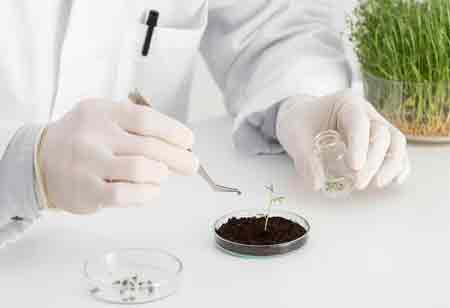Thank you for Subscribing to Agri Business Review Weekly Brief
Harnessing Mushrooms as Natural Biopesticides: A Sustainable Approach to Crop Protection
Mushrooms are emerging as natural biopesticides, offering eco-friendly pest control, enhancing soil health, and promoting sustainable agriculture by reducing reliance on chemical pesticides.

By
Agri Business Review | Tuesday, December 16, 2025
Stay ahead of the industry with exclusive feature stories on the top companies, expert insights and the latest news delivered straight to your inbox. Subscribe today.
Fremont, CA: For decades, modern agriculture has relied on chemical pesticides. While they have undeniably boosted crop yields and fed a growing global population, their indiscriminate use has come at a steep environmental cost. Widespread soil toxicity, contaminated water systems, harm to beneficial insects, and the rise of pesticide-resistant pests have forced us to seek smarter, more sustainable solutions. In this quest, an unlikely hero is emerging from the forest floor and the soil itself: the mushroom.
Far more than a culinary delight, the fungal kingdom offers a powerful arsenal of natural pest control agents. Known as mycopesticides, these formulations derived from fungi represent a groundbreaking shift in crop protection—a move away from synthetic warfare and towards a partnership with nature.
Fungi: Nature's Silent Assassins
Mycopesticides leverage the natural capabilities of entomopathogenic fungi—literally “insect-pathogenizing fungi”—which have evolved over millions of years as highly effective insect parasites, making them powerful tools for biological pest control. The infection process begins when fungal spores, such as those from Beauveria bassiana or Metarhizium anisopliae, attach to the cuticle of a target pest, such as an aphid, whitefly, or beetle. Once attached, the spore germinates and develops a germ tube that secretes enzymes, including chitinases and proteases, to break down the insect’s protective exoskeleton. The fungus then invades the insect’s body cavity (hemocoel), where it multiplies rapidly, consuming nutrients and disrupting internal systems. Many entomopathogenic fungi also release potent mycotoxins that paralyze or kill the host, hastening its death. Following mortality, the fungus often emerges from the insect’s body, producing new spores on the carcass. This “mummified” pest becomes a reservoir of infection, enabling the fungi to spread naturally within pest populations and creating a self-sustaining cycle of biological control.
The Advantages of a Fungal Approach
Mushrooms are increasingly being positioned as a cornerstone of modern farming, not merely as an eco-friendly ideal but as a practical and intelligent innovation with measurable benefits. Unlike chemical pesticides that sterilize the soil and leave toxic residues, mycopesticides are organic, biodegradable, and naturally integrated into the soil microbiome. Their presence not only avoids long-term toxicity but also enhances soil health by breaking down organic matter and supporting ecosystem balance. Moreover, many strains of entomopathogenic fungi exhibit high target specificity, effectively controlling pests such as ticks and termites while leaving beneficial organisms like honeybees and earthworms unharmed. This precision ensures pest management without disrupting essential ecosystem services. Mycopesticides also address one of the most pressing challenges in agriculture—pesticide resistance. While chemical pesticides typically act through a single metabolic pathway, fungi attack pests on multiple fronts—physically, chemically, and biologically—making resistance far less likely to develop. Importantly, mushroom-based biopesticides integrate seamlessly into sustainable agricultural practices, complementing Integrated Pest Management (IPM), organic farming, and regenerative approaches. They can be rotated or combined with other biological controls and cultural practices, reducing dependence on chemical inputs while fostering resilience and long-term productivity.
Harnessing mushrooms as biopesticides represents a profound paradigm shift in agriculture. It is a move from confrontation to collaboration, from polluting the soils to enriching them. Embracing these fungal allies helps protect crops, restore ecological balance, and build a truly sustainable food system for future generations.





